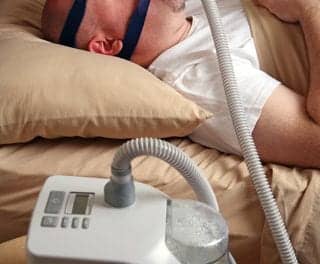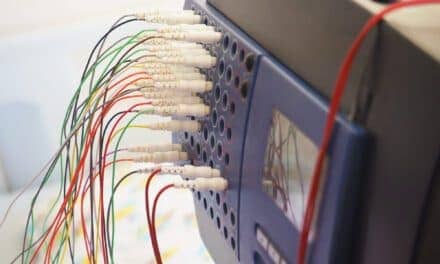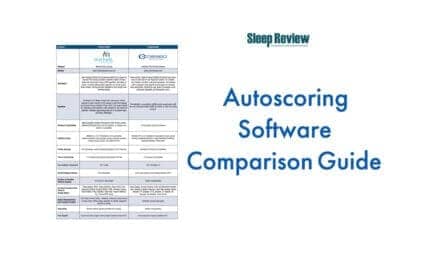APT Update

Today, sleep is understood to be a basic biological process that significantly impacts the function of all organ systems. Substantial modifications in lifestyle, secondary to societal progress combined with tremendous advances in both medicine and science, have generated a need for physicians trained in the diagnosis and management of sleep disorders and for polysomnographic technologists trained in the acquisition and analysis of sleep data.
Methodologies for acquisitioning and analyzing sleep have been a primary focus of the polysomnographic profession since 1977. The need to create a professional identity for polysomnography was realized almost immediately, and in April 1978, the Association of Polysomnographic Technologists (APT) was established. Efforts were initiated to create an education and examination board under the auspices of the APT and the first examination that established the Board of Registered Polysomnographic Technologists (BRPT) was hosted in October 1979 at the State University of New York in Stony Brook.
Recognition
Recognition of a credential is critical to any profession and because of this, it became necessary to separate the administration and management of the APT from the BRPT. The National Commission for Certifying Agencies (NCCA) requires that a certification organization be independent in decision-making for all matters pertaining to certification and that the accreditation and education functions of the discipline remain separate. For this reason, the APT and BRPT separated in 2000. This past September, NCCA accredited the BRPT credentialing program.
This is of utmost importance to our profession as the BRPT credentialing program assesses the professional competence of the polysomnographic technologist. For some time now, the APT has been dealing with state legislative issues concerning the practice of polysomnography and competence of the polysomnographic technologist. These issues pertain to the polysomnographic procedures that are termed similarly in the respiratory care acts. This licensure verbiage speaks to such procedures as positive airway pressure and oxygen administration and has generated a considerable amount of concern from the respiratory care licensure boards and other respiratory care professionals. While the situation creates some challenging issues, the APT believes the resolution would be through a collaborative effort between the two professions. Patient safety is at the heart of such concerns and has always been the primary focus of the APT.
In response to such concerns, the APT has worked to address questions related to the scope of practice for the polysomnographic technologist and the issue of patient safety. Communicating explanations of who the polysomnographic technologist is, the role of the polysomnographic technologist in performing sleep studies, accountability for the polysomnographic technologist, and the growth and development of the polysomnography profession has met with varying results in different states.
In light of the ongoing legislative issues we face in our efforts to establish the polysomnographic profession as a distinct discipline, the APT Board of Directors enlisted the services of a governmental relations consulting firm based in Washington, DC. A half-day session was scheduled to assess the following factors:
- Current scope of practice issues/licensure climate (state and federal)
- Organization and individual stakeholders
- Local resources of the organization
- Priorities of the organization
From this assessment, a work plan that outlines methodologies to affect the legislative issues has been developed. The plan suggests opportunities where the APT can strategize at a local or a national level and also outlines what issues the APT should focus their attention on and the minimum resources necessary to address those issues.
It is important to realize that the best-laid work plan is only as effective as the individuals who believe in it and are willing to work together to implement it. In part, the success of our continued efforts for establishing polysomnography as a distinct discipline will be driven by communications with individual polysomnographic technologists. Open discussion regarding the big picture with polysomnographic technologists will allow for a more informed decision-making process that will benefit the future of our profession and consequently the individual. Decisions are what drive actions, and the possibilities that can be derived from such energies are very exciting; however, they are also very powerful in their effect and in this instance will shape the disciplines of polysomnography and respiratory care for years to come.
The APT has made arrangements to organize a strategic planning session that will include representation from the American Academy of Sleep Medicine, the BRPT, and other professional entities. Long-term visions and strategies are critical to the future direction of polysomnography as a profession and our careers as polysomnographic technologists. Part of this vision includes the work of the APT Curriculum Committee with the completion of a 2-year curriculum for polysomnography. Work continues on the syllabi and is expected to be completed this year.
Work also continues with our efforts to establish a Committee on Accreditation for Polysomnography. In March of last year, the Commission on Accreditation of Allied Health Education Programs (CAAHEP) organized a meeting with representatives from the APT, the Committee on Accreditation for Electroneurodiagnostic Technology, the American Association for Respiratory Care, and the Committee on Accreditation for Respiratory Care. At that time, an agreement was made to support the efforts of the electroneurodiagnostic professionals and the respiratory care professionals to develop outcome-based curriculum standards that would include a polysomnography concentration. In turn, the APT was given support to continue its efforts to establish independent 2-year polysomnography educational programs and to coordinate the establishment of a Committee on Accreditation for Polysomnography. In April of this year, the APT will present the profession of polysomnography for eligibility to the CAAHEP system and we are optimistic that this effort will be met with success.
Creating a world where individuals will graduate from an accredited 2-year polysomnography program or other allied health program with a concentration in polysomnography is not unrealistic, but in fact necessary for the continued evolution of this discipline.
Rose Ann Zumstein, RPSGT, is APT president and director of the Sleep Disorders Institute for St Jude Medical Center in Fullerton and Mission Viejo, Calif. She may be reached via email at [email protected].





